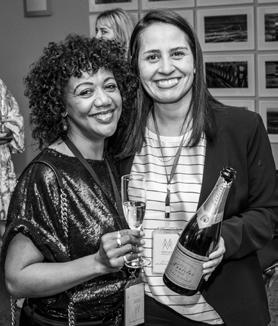
4 minute read
Méthode Marlborough Day
The passionate patience that precedes the pop
SOPHIE PREECE
MÉTHODE MARLBOROUGH was established in 2013, fuelled by respect for the quality of the region’s sparkling wines and a desire to share their prestige. Eight years on, the inaugural Méthode Marlborough Day, held on March 26, marked a coming of age for the cooperative of 12 dedicated producers, celebrating the unique climate, classic varieties and traditional method that make their bubbles beautiful.
That beauty is also thanks to a passionate patience, exemplified by Johanneshof winemaker Edel Everling, whose 2013 sparkling wines have yet to come to age these eight years on, still tucked up in a dark, cool underground cellar, awaiting their 2023 release. “If you want to produce a really quality product you have to go the extra mile,” says Edel.
That’s the kind of time, effort and investment Méthode Marlborough seeks to cast a light on, educating consumers about the authenticity and quality of méthode traditionelle wines from the region, she says. “As a group our wines are incredibly diverse and individual, but we have in common that we all strive for the ultimate in excellence in quality.”
Each member company works within strict criteria, whereby their wines must have the second fermentation in the bottle, be made with one or more of the classic varieties - Pinot Noir, Chardonnay and Pinot Meunier – and must be aged on lees for a minimum of 18 months, but are often rested far longer. The second fermentation in the bottle ensures the finest and most persistent bead, and the aging allows complex flavours to develop, balancing fresh and fruit driven character with savoury notes of toast and brioche.
Group chair Dan Taylor is so smitten by the “superb quality” of Marlborough’s méthode traditionelle that it’s the wine he’d take to a desert island, if he had to choose one style. “There’s such a broad range within the Méthode Marlborough stable, with varietal mixes, time on lees, and winemaking choices at play, as well as the choice of vintage or non-vintage,” says the international sales manager for Tohu Wines. “Plus, it’s the perfect accompaniment to oysters, so with the right island, you could be pretty happy.”
He’d likely be in good company, given the surge of sparkling commentary on social media on March 26, including from the five fans who filmed their sabrage opening of Méthode Marlborough wines, wielding a sharp sword to slice the neck off the bottle.
In Marlborough, the day wound up with a progressive dinner for 100, with guests bussing from Wither Hills to Spy Valley to Saint Clair Vineyard Kitchen, where they tasted a selection from the 12 member wineries, enjoyed with delicious canapes under glittering fairy lights.
Wine educator and reviewer Bob Campbell, MW, attended the event, and met with all the member producers while in the region. “I think that the Méthode Marlborough wines rate very well indeed and I support their efforts to increase their profile and image in New Zealand,” says Bob, who is keen to increase knowledge about the effort and expense involved in making bottle-fermented sparkling wines.
Stephanie McIntyre, a sommelier and the event’s organiser, was one of the three people - including Adele Le Brun of No.1 Family Estate - who came up with the concept of Méthode Marlborough, after talking about the calibre of sparkling wines being made in Marlborough. “All three of us felt they needed to be celebrated and talked about more,” she says. “Marlborough shouldn’t only talk about Sauvignon Blanc – although that’s what we are famous for and for good reason – and our méthode traditionelle wines have a halo effect, literally giving a sparkle to the region’s reputation.”
Nearly a decade in, Méthode Marlborough has a strong momentum, with members excited about the opportunity to share details on the wines they love, she says. “We are just so proud of what we are producing.”
Peter Jackson, the winemaker from newest Méthode Marlborough member Whitehaven, was pouring Samantha, made from 70% Chardonnay and 30% Pinot Noir, at the progressive evening. The wine was launched just before Christmas, and he says it has been a pleasure to add it to their portfolio, especially with the support of the other members. “We are learning our craft, but we are loving it.”
Dan says any Marlborough sparkling wine producers working within the criteria are welcome to get in touch to learn more about being a member of Méthode Marlborough. methodemarlborough.org
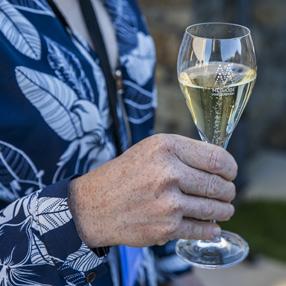
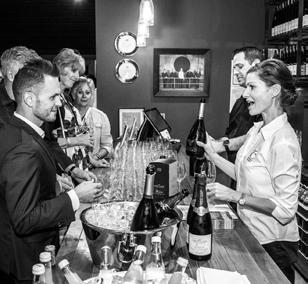


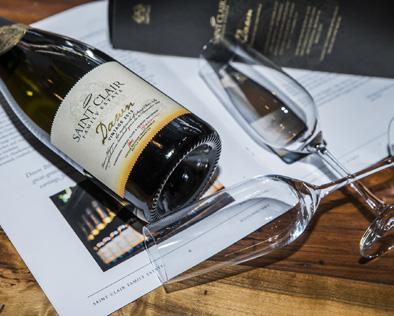

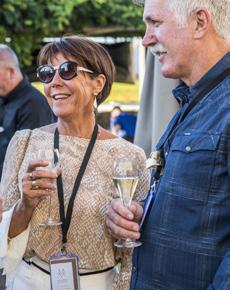
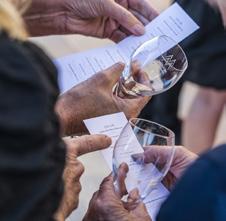

All Photos by Richard Briggs

